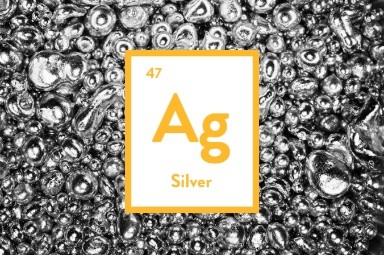The CLP harmonization of silver under the Classification, Labelling, and Packaging (CLP) Regulation is a significant regulatory change with implications for various industries. With the adoption of a harmonized classification, manufacturers, distributors, and users of silver-containing products now have to comply with updated safety and hazard classifications to ensure consistent labeling and handling of this chemical substance across the European Union.
Understanding CLP Classification
The CLP Regulation (Regulation (EC) No 1272/2008) enforces the EU-wide classification and labeling of chemicals per the Globally Harmonized System (GHS). It standardizes hazard identification and safety information for substances, including risks to health, the environment, and physical hazards. Under this system, silver must follow specific labeling protocols for risk and precautionary information, resolving past inconsistencies in classification.
Harmonised classification and labelling (CLH)
Harmonised classifications are listed in Annex VI to the CLP Regulation and should be applied by all manufacturers, importers or downstream users of such substances and of mixtures containing such substances.
CLH can be proposed for substances without a current entry in Annex VI to CLP, or to those with an existing harmonised classification, which would need to be changed either due to availability of new information, new scientific or technical developments, changes in the classification criteria or based on the re-evaluation of existing data.
Manufacturers, importers or downstream users have to (self)classify and label hazardous substances and mixtures to ensure a high level of protection of human health and the environment.
For hazards of highest concern (carcinogenicity, mutagenicity, reproductive toxicity (CMR) and respiratory sensitisers) and for other substances on a case-by-case basis, classification and labelling should be harmonised throughout the EU to ensure an adequate risk management. This is done through harmonised classification and labelling (CLH).
Table of harmonised entries in Annex VI to CLP: https://echa.europa.eu/information-on-chemicals/annex-vi-to-clp
Silver – EU CLP harmonized classification
Harmonization classification of silver – Key Changes:
- Environmental Hazard Classification: Silver has been classified with a particular focus on its effects on the aquatic environment. Given its widespread use and potential for bioaccumulation in aquatic ecosystems, the harmonized classification acknowledges silver’s long-term hazard to aquatic life. This classification includes hazards related to acute and chronic aquatic toxicity.
- Health Hazard Classification:
- silver massive – Repr. 2; STOT RE 2 (nervous system).
- silver powder – Repr. 2; STOT RE 2 (nervous system); Aquatic acute 1; Aquatic Chronic 1.
- silver nano – Repr. 2; STOT RE 2 (nervous system); Aquatic acute 1; Aquatic Chronic 1.
Depending on the form (e.g., silver nitrate, silver compounds), it may require specific hazard classifications that could include categories like Aquatic Acute 1 or Aquatic Chronic 1 (these labels refer to acute and chronic toxicity to aquatic environments).
- Hazard Statements and Labeling: The harmonized classification mandates specific hazard statements to accompany silver-containing products, such as “Very toxic to aquatic life” and “Very toxic to aquatic life with long-lasting effects.” These labels are intended to inform users about safe disposal practices and limit environmental exposure, helping prevent silver from accumulating in water bodies.
- Safety and Precautionary Measures: The harmonized classification also brings forth standardized precautionary measures. These might include instructions for safe handling, proper disposal, and personal protective equipment for those working with silver compounds or products containing significant amounts of silver. Such measures aim to minimize both human and environmental risks.
The Regulation (EU) 2024/2564 that establishes the basis of the changes shall apply from 1st May 2026. However, substances and mixtures may be classified, labeled and packaged in accordance with the amended regulation starting from 9th July 2024.
Implications for Key Industries
Harmonizing silver classification under CLP impacts multiple industries and stakeholders across the EU, including:
- Manufacturers: Companies producing silver or its compounds must update safety data sheets and labels to meet new requirements, potentially adding compliance costs but enhancing safety.
- Environmental and Health Protection: Silver’s impact on aquatic life has become a primary focus due to the potential for long-term environmental harm. Industries handling significant quantities of silver must now implement practices to mitigate the release of silver into water systems, thereby helping to prevent ecosystem contamination.
- Importers and Distributors: They will also need to align their practices with the harmonized classification. This change means more rigorous checks and updates in the distribution chain to ensure that all labels, hazard statements, and precautionary instructions meet the newly established standards.
Silver – toxic for reproduction, toxic for nervous system + aquatic toxicity
- all forms of silver – silver massive, silver powder and silver nano are classified for health hazard – Repr. 2; STOT RE 2 (nervous system).
- silver powder and silver nano are also classified as toxic for aquatic environment – Aquatic acute 1; Aquatic Chronic 1.
Delegated regulation – EU – 2024/2564 – EN – EUR-Lex
Ekotox SDS webpages: https://ekotox.eu/safety-data-sheet-sds/
Ekotox Chemicals Management webpages: https://ekotox.eu/chemicals-management/

